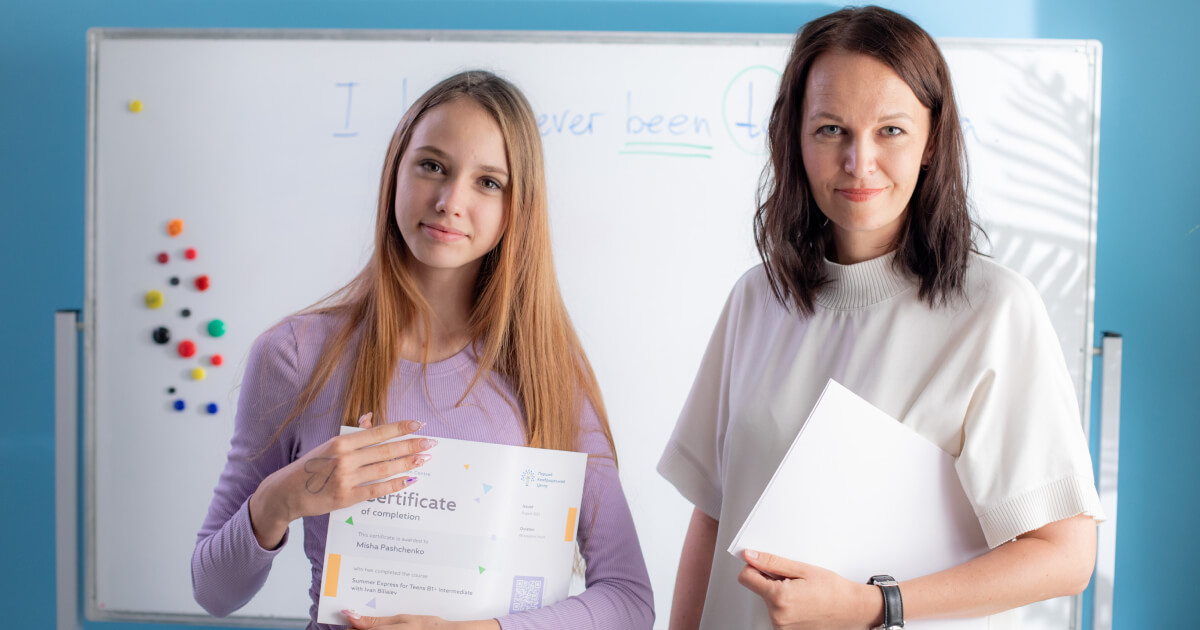
Classroom management tips for teens
- Teaching qualifications
- Tips & Strategies
- Methodology

05.09.2022
If you are teaching English to preschoolers or primary school students, you are probably familiar with the term ‘sight words’. If not, we suggest finding out what these words are, why they are taught, and how.
Sight words are an important foundation we lay when we teach YL read in English. It is important to teach students to recognize such words by appearance.
This will allow them to start reading English on their own faster. It is also necessary to know sight words, because most children’s literature consists of them.
From the very name, “sight words”, it’s easy to guess that these are words that students learn visually, not sounding them. And these are also the most commonly used words. Usually teachers use two lists to choose which words to teach: Fry Words and Dolch Words.
However, some colleagues use the Oxford list to expand students’ vocabulary.
The biggest challenge in learning these words is that: Most sight words or visual words do not have visual elements that are easily associated with them.
It makes it difficult to understand their meaning. It is difficult for students to read and write many of these words – they are not spelled the way they sound. YL are expected to gradually learn more and more words by appearance.
Schools set their own rules about what words children should know, to what level or grade. For example:
| Kindergarten | be, but, do, have, he, she, they, was, what, with |
| 1st grade | after, again, could, from, had, her, his, of, then, when |
| 2nd grade | around, because, been, before, does, don’t, goes, right, which, write |
| 3rd grade | better, carry, eight, laugh, light, myself, only, own, shall, together |
| 4th grade | area, body, certain, complete, measure, notice, piece, questions, unit, usually |
| 5th grade | among, course, equation, language, machine, minutes, produce, quickly, shown, special |
How to find out that students know these words? First of all, students can:
Students memorize sight words best in context. Here are some interesting ways to teach them. Chants This method works great for words such as the, a, and of. It is important that students have a word in front of them when they say the chant.
When they say a word, they point to it and to the letters. For example:
The: I can say thee or I can say thuh, but I always spell it t h e
A: I can say ā or I can say uh, but I always spell it with the letter a
Of is hard to spell, but not for me. I love to spell of. o f’ of, o f of, o f of.
Preschoolers love learning with music. Once they have mastered the song about the alphabet, you can move on to songs that contain sight words. You can, for example, compose your own songs, or use those that are online:
Word wall іs a set of words that are represented by large visible letters on a wall, blackboard or other surface in the classroom. The word wall works as an interactive tool for students and contains a set of words that can be used when writing and reading.

Find the right place for the wall with the words. All students should see and access it. Choose the right background that highlights the words on the wall. The best is a dark background. Think about the materials used to replace or add words (such as scotch tape, markers, pencils, cards, etc.) to the word wall.
They will be needed to easily add words during the lesson. Allow students to add them to the wall — it will give them a sense of accomplishment.
You can arrange the words on the wall in alphabetical order to improve your students' knowledge of the alphabet, but this is not necessary.
Mark the letters with colors so that they can be easily referenced during the lesson. For example, if you need to point out a letter to students, you can say that it is a yellow card under the letter N. A wall can have categories dedicated to different topics. Refer to the word wall as often as possible during lessons so that students understand its relevance. Read more about Word Walls here.
Kinesthetic learners will appreciate the technique of tapping on the hand. When you teach students a new word by pronouncing it, they touch the opposite shoulder with their right hand.
Then tap two fingers on the arm from shoulder to wrist and say each letter. This is what the word “once” looks like:
Or with a few words at once:
Most sight words are not easy to understand. Putting them in a sentence or phrase helps to give meaning to words and allows us to visualize those words.
Students can read short sentences and phrases several times. So they can quickly start working on free reading and do not focus on decoding words, sentences or phrases.
What phrases can we use? For example:
You can download the list of phrases and sentences by levels here.
There are many high quality simple sight word readers that use photos or simple images. Students learn new words and sight words at the same time. The context of the books gives sight words meaning.
There are many such readers on the Internet. Here are some examples:
We also recommend Teaching Mama — a resource where great Sight Word Readers can be downloaded for free.

What to replace gestures within an online classroom?
Read moreThis is another great way to allow students to practice reading and writing sentences with some help.
You can create sentences with words that students learn, and then ask them to add new words or pictures to practice reading.
For writing, students learn to write using a frame and adding their own information. There are also ready-made frames for sight words, which can be purchased in online stores.
Improve your online teaching skills
So, there are dozens of reasons to teach sight words, and even more ways to do it. The youngest learn through repetition and play. And they do it more willingly than adults.
Having a strong base of sight words, they will be able to learn to read and do almost everything else. Also, young learners can read most of the texts available to them and quickly pick up new words.
We acquire most of our vocabulary in the first years of life. Accordingly, children already know these words through conversations. Learning such words as continuing their written communication is a logical first step that will lead to many others on the child’s reading path.
Yulia Chorna
Author
Product Manager at Grade University | Experienced Educator in General, Business English & Exam Prep | ELT Conference Organiser | Speaker at TESOL & IATEFL Conferences | Passionate About Teacher Development & Educational Innovation
Comments
Leave your comment